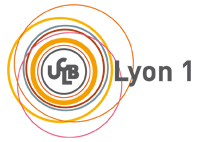Outils pour utilisateurs
Panneau latéral
Table des matières
Project description
Project context
The “Web Serviable” project follows recent evolutions of Web technologies: Web of data, semantic Web, Web of objects. These themes are studied in parallel in several teams of the LIRIS lab, with complementary skills and research objectives. This project - among others - aims at federating such skills and objectives, as well as in the long term, at improving the visibility of the LIRIS lab on these topics.
Project work
This project aims at exploring joint usages that can be made of semantic annotations and interaction traces in the context of a distributed environment across the Web.
Semantic annotations are all the metadata that describe, in a machine-usable format, resources and services available on the Web. Complementary skills of the DRIM (semantic contextual adaptation), SOC (description and semantic annotation of services) and SILEX (RDF modelling, multimedia annotations) teams are focused on this aspect. In particular, these annotations describe distributed interactions in functional (semantics of the proposed service) and non-functional (protocols, edge effects, quality of service…) terms.
The interaction traces considered in this project are specific semantic annotations, describing how an agent (be it a user, service, or a connected object) interacts with various services and resources. More specifically, we consider the “low level” interactions corresponding to those described in the semantic annotations. Models developed by the SILEX team, as well as the kTBS platform, may be used to describe and manipulate these traces.
This issue is particularly important in mobile environments, where the skills of DRIM are mobilized. The challenge is to implement both theoretical (scalable service models for mobile and Web environments) and technical (design and implementation of mechanisms for trace exploitation through interactions with services) tools.
Project focus
In this project, we aim at studying the following questions:
- How to identify the user's activity by crossing low-level interaction traces with semantic annotations? This issue has already been addressed by the SILEX team, using higher-level traces (at the Computer-Human Interface level); the originality here is to rely on lower-level traces (i.e. service invocations), enriched with the knowledge provided by semantic annotations.
- To what extent is it possible to distinguish and reuse service compositions manually defined by the user or hardcoded in other agents? Once identified, such compositions can be shared among users, suggested by a recommender system or automatically selected by an adaptive system.
- How can semantic annotations help selecting communication protocols and schemas adapted to the interaction context? This is to identify how annotations representing traces of past interactions or service descriptions may allow the adaptation of a communication through one of the two communication schemes now used on the Web: request-response (HTTP) and message-oriented (WebSocket).




